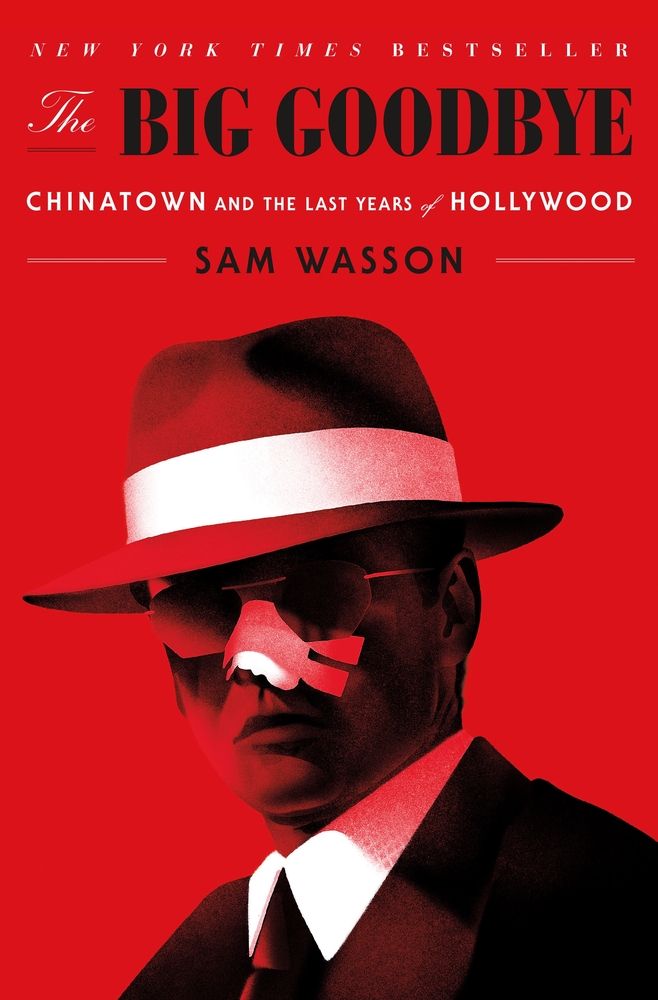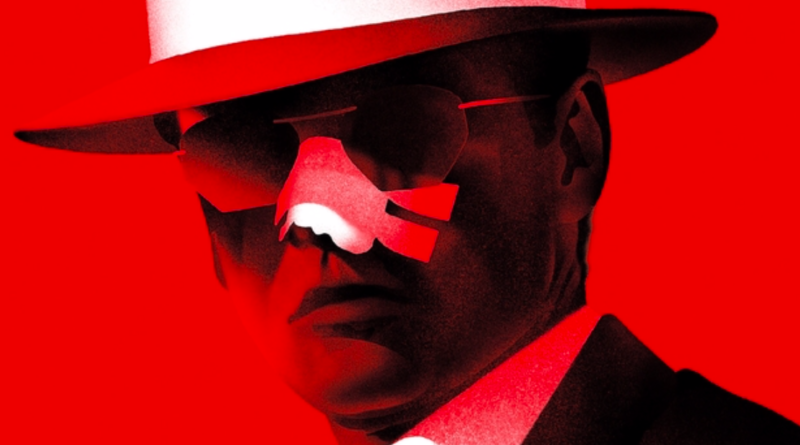REVIEW: ‘The Big Goodbye: Chinatown and the Last Years of Hollywood’ by Sam Wasson
Image courtesy of Flatiron / Provided by official site.
Sam Wasson’s new book, The Big Goodbye: Chinatown and the Last Years of Hollywood, is a thoughtful and meticulous recounting of the efforts that went into making arguably one of the most important Hollywood films of all time. The author is able to effectively contextualize the events surrounding the movie, comparing and contrasting them to the time period, the geographical area of Los Angeles, the history of corrupt water deals in Southern California, and the reshaping industry of filmmaking.
To fill up his more than 300 pages of detail, Wasson tells the story of Chinatown by focusing on the story of four men tied to its production: producer Robert Evans, director Roman Polanski, writer Robert Towne and actor Jack Nicholson. These four names are legendary in the annals of Hollywood history — sometimes their infamy outpacing their fame.
The late Evans, who wrote about this time period in his autobiography The Kid Stays in the Picture, played by unconventional rules in Tinseltown. He was a young studio head (Paramount, in this case) who was given a long leash and turned his Beverly Hills home, dubbed Woodland, into a meeting place and watering hole for the industry’s elite. Every night he would screen pictures poolside, simultaneously enjoying and stressing about the dailies coming in from his various productions. And what productions they were: The Godfather, Love Story and Rosemary’s Baby, this last one another Polanski picture and the one that convinced Evans to hire the director for Chinatown. Evans either served as producer or head of production for Paramount on these films and many more, and his winning hand gained much attention around town and allowed for an uncommon level of freedom in the rigid studio system.
Polanski’s story in the book is bookended by events that are well known to audiences. He is a Holocaust survivor (this part of his life opens the book) and also was in London when his pregnant wife, Sharon Tate, was murdered by a gang of killers overseen by Charles Manson. These incidents plagued Polanski and sent him searching for answers and understanding. He seemed to be still processing the tragedies when he took on the job of Chinatown, where he was exacting and precise on what “look” he wanted to achieve. Near the end of the book, Wasson details how, following the creation of this noir classic, Polanski was arrested on a number of charges, including raping a minor. (More accusations have surfaced in recent years.)
Polanski fought with Towne on the script, according to Wasson’s book, and the director ended up rewriting several parts but not seeking a writing credit. This must have been interesting on Oscar night because Chinatown won only one Academy Award: for its writing. Towne’s story in the book is centered on his in-demand work during the 1970s, when he was courted to write or co-write scripts for several high-profile projects, including Shampoo and The Last Detail. He was also brought in as a consultant on The Godfather and later Marathon Man, among other features. His final segment in the book details his divorce proceedings involving Julie Payne and his work with Nicholson on Chinatown’s unfortunate sequel, The Two Jakes.
Nicholson, one of the most famous actors of the past 50 years, stuck with Chinatown through its many ups and downs, determined to bring his portrayal of private eye J.J. Gittes to the big screen. He remained dedicated to Evans and Polanski throughout the project, and he worked well with co-star Faye Dunaway (whose part in Wasson’s book feels lacking in detail; she is described in only a few sections, and mostly for her perceived difficulty on set).
Throughout the narrative, there are great anecdotes — like the one about the knife scene in the movie that found the character of Gittes donning a gauzy bandage for a large part of the film. There are memories of John Huston being on set, regaling the team with stories of his own directing days. There is the frantic search for a composer who could capture 1930s Los Angeles (Jerry Goldsmith was eventually brought in). There are also descriptions of Paramount’s business deals and the musical chairs of its top executives.
Through meticulous research (the “Notes” section is extensive), Wasson is able to re-create many of the important points of how this movie was made. The odds were stacked so much against the team that at times I found myself thinking the movie would never be made — even though I have enjoyed it several times over.
Perhaps more memorable than the memories themselves is how Wasson is able to place each episode of this saga in a historical context. The making of Chinatown is really the story of 1970s cinema (the ending of an era, as it were), the story of four men operating in a man’s world (sometimes quite tragically and toxically), and the story of the push and pull between artistic merit and business acumen. Evans, to his credit, believed that his team needed to work with as little oversight as possible (although there ended up being some oversight on Chinatown’s set) because the producer trusted the up-and-coming generation of writers, directors and actors who wanted to make “human” stories.
Wasson doesn’t pull any punches with those involved or wax poetic about a bygone era. He is unwavering in his presentation of the facts, but he also allows himself to have some quasi-academic interpretation on how everything fits together. He takes his time with Polanski’s upbringing and the tragedy surrounding Tate (noticeably he describes the Manson murders from Polanski’s viewpoint; the director was in London on his way home to Los Angeles), but he also depicts the harrowing details of the case involving a 13-year-old and the director’s fleeing from the United States. He now lives in Europe as a fugitive from U.S. law enforcement, and many of his fans are reconsidering his reputation and cinematic oeuvre. The #MeToo movement’s renewed focus on sexual harassment, sexual abuse and violence against women — involving the likes of Harvey Weinstein and others — has highlighted victims and the powerful stories they have been sharing with the media.
Nicholson comes through quite interestingly in Wasson’s words. He is ambitious, but seemingly laid back; searching for a father figure like Huston, but also prone to breaking the rules; excited about his first leading-man part, but also woeful over that bandage on his nose; wanting to be an auteur himself, but also willing later in his career to descend the rungs and act in films that feel miles away from the mastery of Chinatown. Like Evans, he also seems to be a character defined by his house — his up along Mulholland Drive.
The author of The Big Goodbye is able to package so many of these stories into such a fascinating book that will engage readers with its historical anecdotes and also teach a few vital lessons about movie-making, an industry that seems to reinvent itself every few decades, and the ongoing metaphor of what Chinatown truly means.
By John Soltes / Publisher / John@HollywoodSoapbox.com
The Big Goodbye: Chinatown and the Last Years of Hollywood by Sam Wasson. Flatiron Books. $29. Click here for more information.


